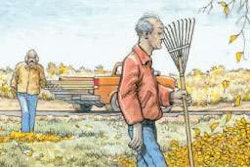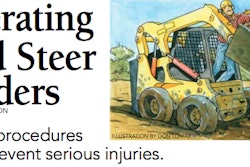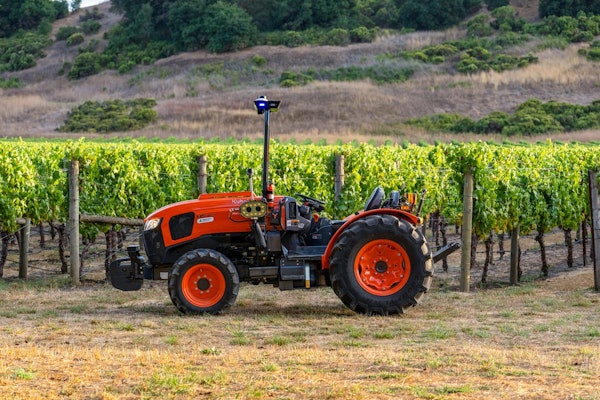Downtime is the biggest downside to skid steer tire flats. “The most common puncture hazard is nails,” says Adam Haynes, who owns Artisan Landscapes in Jacksonville, Oregon, “but there are other hazards. We sliced a tire recently on ceramic roofing tiles while cleaning up a jobsite.”
Even a small leak can be a problem when it causes uneven tire wear, leads to a blowout or causes a tire to “lose the bead,” the rim-tire connection, which often requires shop attention to get it going again.
“Sometimes you don’t know you have a leak, and you show up for work the next morning and you’ve lost the bead,” Haynes says. These situations are not easily repaired on the jobsite, which means more downtime.
The flat repair is only the beginning. Additional costs include time arranging for the flat repair, down- time for the machine and operator and production interruptions for employees who depend on the work the skid steer performs. Less tangible is the impression a disabled machine makes on a client.
Tire sealant, tire liners and foam-filled pneumatic tires are among the solutions landscapers use to combat flats. A spare tire can be useful, but you have to make provisions for handling the high torque lug nuts and getting the rear of the machine elevated for rear-tire changes can be a challenge.
Solid Solutions
An alternative option for extreme flat-causing environments is solid tires. They can be punctured, impaled, cut, stabbed, slashed and shot and will keep rolling. Additionally, most solid tires have much better wear characteristics than those of pneumatic tires. This is due to a combination of factors including larger tread blocks, tougher materials and the elimination of inflation requirements that affect tire life.
Several skid steer manufacturers and many Google pages of aftermarket companies offer solid tires in a variety of tread designs.
“The benefits of increased tire life are evident in landscaping operations that use skid steers extensively on paved surfaces such as concrete, asphalt and stone,” says Curtis Goettel, marketing manager for Case Construction Equipment. “With recent advances in solid tire design, we’ve seen customers start using them for a much wider variety of skid steer applications.”
Solid tires come with or without apertures, which are holes in the sidewalls that make the tire lighter and more flexible. This feature offers a softer ride and is easier on operators and machine components.
In general, rims for solid tires are not the same as those for pneumatic tires, which means you need to buy the rims withe tires. The rims might not be reusable depending on the design.
On the downside, solid tires weigh more, are rougher riding and cost much more than pneumatic tires. The typical cost of high-quality, solid skid steer tires is $1,750 to $4,500 a set, depending on brand, size, style, geographic location and dealer. But, solid tires can make good business sense if you consider the hidden costs of skid steer flats.
“Not one customer I know of has come back later and said he regretted buying solid tires for a skid steer,” Goettel says. “In fact, most claim they are one of the best added options they have ever chosen to purchase.”
Bottom line: It’s one of those pay-now or pay-later business decisions. Solid skid steer tires will benefit landscapers who put their tires at higher risk in harsher conditions. If demolition and debris removal is a regular part of your business, solid tires can help keep things rolling.
~~By Larry Walton
Cost Calculator
Here’s a table taken from solidboss.com for calculating the cost of air tires and associated flat-tire expenses versus solid tires:
1. Flat tire cost including repair and service
2. Number of workers idle
3. Hours of downtime required for repair
4. Workers’ hourly wage and benefits
5. Hourly billing for machine operation
6. Hours lost during flat repair
Total Cost of One Tire Flat
7. Cost of solid tire
8. Cost of air tire
Total incremental cost
Number of flats to justify









